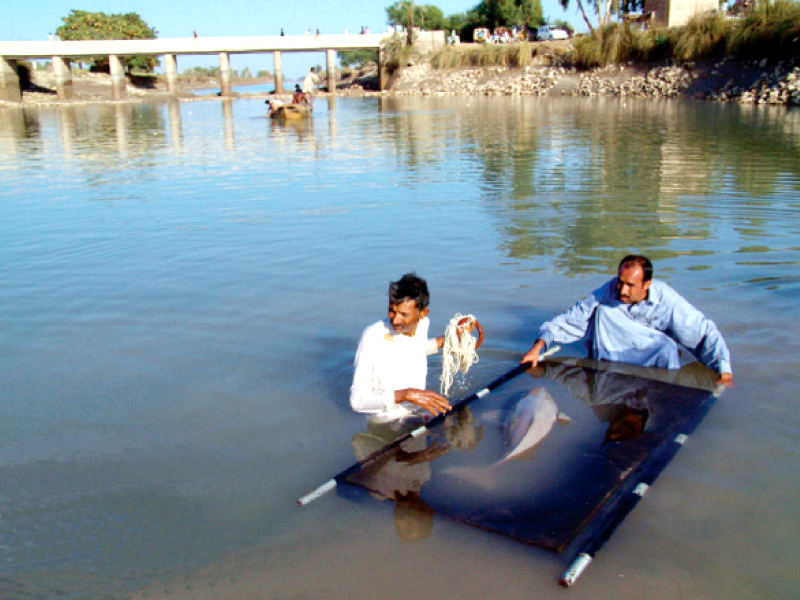
LAHORE:
“Barrages on the rivers affect the natural habitat of the Indus River dolphin,” Uzma Noreen, the co-ordinator of the World Wildlife Fund’s (WWF) Indus River Dolphin project, told The Express Tribune on Thursday.
She said the current distribution range of the endangered dolphin was a 1,000km stretch of the Indus River, including the main channel and active channels connected to it between Jinnah and Kotri Barrages.
She said the present population of the Indus River Dolphin was nearly 20 per cent of that determined in the 1870s.
“Two decades ago, the total population of Indus River Dolphin was reported to be 500. The dolphin population was fragmented due to barrages acting as barriers to free movement, both upstream and downstream,” she said.
Noreen said in 2001, a comprehensive study was conducted by the WWF-Pakistan. It was led by Gillian Braulik.

She said the results of the study revealed that there were 965 dolphins in the Indus River.
She said another study in 2006 found 1,600 to 1,750 dolphins when results for river sections missed in the 2001 study were included.
Noreen said a recently published study showed that barrages caused a fragmentation of the habitat for the dolphin.
She said the dolphin was one of the most threatened river-dwelling cetaceans in five sub-populations of the Indus River.
Noreen said there were four species of river dolphins; Yangtze River Dolphin, Amazon River Dolphin, Ganges River Dolphin and the Indus River Dolphin.
Noreen said the Indus River Dolphin was characterised by its side-swimming behaviour. She said its movement was difficult to observe due to the turbid water.
She said the fish had no crystalline eye lens and showed no reaction to sudden changes in light intensity. She the species was functionally blind.
“These dolphins are found in loose aggregations, where the mother and the calf stay close,” she said.
She said population of the Indus River Dolphin tended to move downstream.
Threats to Indus River Dolphin
Noreen said the dolphin had been categorised as endangered by the IUCN.
She said the WWF and the Sindh Wildlife Protection Department had been rescuing dolphins since the 1990s whenever they were found trapped in small water pools in canals. She said they had saved 104 dolphins in 138 rescue attempts.
She said Indus River Dolphin had also been hunted for extraction of oil for medicines.
She said accidental mortality of Indus River Dolphin was attributed to entanglement in fishing nets and entrapment in irrigation canals.
She said an increase in illegal fishing practices between Guddu and Sukkur barrages in the past two years had been recorded. She said use of pesticide poisoning to increase fish catch and overnight fishing nets was common.
“Pollution is a serious threat to existing populations,” she added.
“The Indus River has agricultural land on both banks,” she said. “Heavy use of pesticide and fertiliser on agricultural lands adds chemicals to the river water through runoff water, polluting the habitat of the Indus River Dolphin.”
Conservation Actions
Noreen recommended designating a stretch of the Indus River between Taunsa and Guddu Barrages as a protected area.
Noreen added that fisheries management and introduction of better fishing practices was imperative to minimize dolphin mortality.
She said it was important to amend fisheries regulations and control illegal fishing activities.
Published in The Express Tribune, October 11th, 2013.





























































COMMENTS
Comments are moderated and generally will be posted if they are on-topic and not abusive.
For more information, please see our Comments FAQ